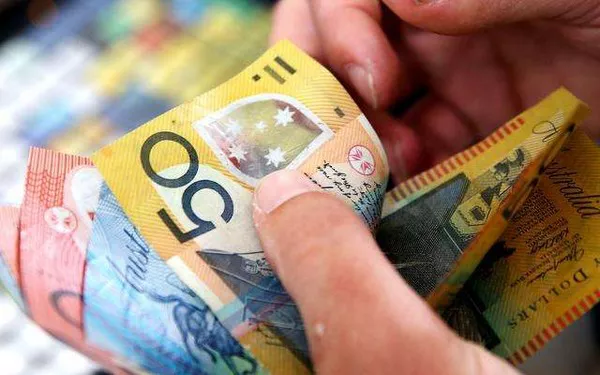Understanding currency conversion is essential for investors, travelers, and anyone involved in international transactions. In this article, we will explore the conversion of 500 Australian Dollars (AUD) to US Dollars (USD). We will look at the current exchange rates, the factors that influence these rates, historical context, and practical considerations for currency exchange.
Current Exchange Rate Overview
As of the latest data, exchange rates fluctuate constantly due to various economic and political factors. For this discussion, let’s assume the current exchange rate is approximately 1 AUD = 0.67 USD. Therefore, converting 500 AUD to USD involves the following calculation:
Amount in USD=500 AUD×0.67 USD/AUD=336.52 USD
At this exchange rate, 500 Australian Dollars would be equivalent to about 336.52 US Dollars. However, the actual amount received may vary based on several factors.
Factors Influencing Exchange Rates
Several factors influence exchange rates between AUD and USD. Understanding these can help anticipate fluctuations and make informed decisions regarding currency exchange.
Economic Indicators
Economic indicators provide insight into the overall health of an economy and can impact currency values. Key indicators include:
Gross Domestic Product (GDP): A growing GDP often strengthens a currency. If Australia’s GDP growth outpaces that of the U.S., the AUD may appreciate against the USD.
Inflation Rates: High inflation can erode purchasing power. If inflation is higher in Australia compared to the U.S., the AUD may depreciate against the USD.
Unemployment Rates: Low unemployment typically signals a strong economy, which can support the value of the respective currency.
Interest Rates
Interest rates set by central banks significantly affect currency valuations. The Reserve Bank of Australia (RBA) and the Federal Reserve in the U.S. are key players in this context.
Higher Australian Interest Rates: If the RBA raises interest rates, it may attract foreign capital, increasing demand for the AUD.
U.S. Interest Rates: Conversely, if the Federal Reserve raises rates, it could strengthen the USD against the AUD, as higher rates attract investors.
Political Stability and Economic Performance
Political events and stability are crucial for maintaining investor confidence in a currency.
Stability in Australia: A stable political environment in Australia can support the value of the AUD. Conversely, political instability can lead to depreciation.
U.S. Political Landscape: Political developments in the U.S. also affect the strength of the USD.
Market Sentiment
Market sentiment refers to the overall attitude of investors toward a particular currency, which can lead to short-term fluctuations.
Risk Appetite: In times of global uncertainty, investors may prefer safe-haven currencies like the USD, which can lead to a stronger dollar against the AUD.
Speculative Trading: If traders believe the AUD will strengthen, they may buy AUD, driving up its value against the USD.
Trade Relations
The trade relationship between Australia and the U.S. significantly influences currency values.
Trade Balance: A trade surplus in Australia (more exports than imports) can strengthen the AUD. Conversely, a trade deficit can weaken it.
Economic Agreements: Trade agreements between the two countries can also affect demand for each currency.
Historical Context of AUD and USD
Examining the historical trends of the AUD and USD can provide valuable context for understanding their current dynamics.
Early 2000s
In the early 2000s, the AUD was relatively weak against the USD. Economic conditions in Australia, including high commodity prices, began to strengthen the AUD.
The 2008 Financial Crisis
The global financial crisis in 2008 had a profound impact on currencies worldwide. The AUD initially fell against the USD as global risk aversion increased. However, Australia’s strong banking system and commodity exports helped the AUD recover more quickly than many other currencies.
Post-Crisis Recovery
After the crisis, the AUD appreciated significantly against the USD, driven by strong commodity prices and a robust Australian economy. This period saw the AUD reach parity with the USD at times.
COVID-19 Pandemic
The pandemic caused significant disruptions in global markets, including currency exchange rates. The AUD faced volatility, but as Australia managed the crisis effectively, the currency began to stabilize and strengthen again.
Practical Considerations for Currency Conversion
When converting AUD to USD, several practical factors should be considered.
Currency Conversion Services
Different financial institutions provide varying rates for currency exchange. Options include:
Banks: Banks often offer competitive exchange rates but may charge fees for currency conversion. It’s wise to compare rates from multiple banks.
Forex Brokers: Forex brokers can provide better rates for larger transactions but may charge commissions.
Online Currency Exchange Platforms: These platforms often provide attractive rates with lower fees, making them a popular choice for individuals and businesses.
Fees and Commissions
When converting currencies, it’s essential to consider additional fees and commissions that may apply.
Transaction Fees: Many banks and exchange services charge either a flat fee or a percentage of the total amount converted.
See Also: Current AUD Exchange Rate: $100 Australian Dollars in Pounds
Exchange Rate Markup: The rate you receive may differ from the market rate due to a markup included by the service provider.
Timing of Conversion
The timing of currency conversion can significantly impact the amount received.
Market Volatility: Exchange rates can change rapidly, influenced by various factors such as economic reports and geopolitical events. Monitoring the market and converting at favorable rates can yield better returns.
Economic Releases: Scheduled economic reports can influence exchange rates. Traders often react to these reports, leading to sudden shifts in currency values.
Hedging Strategies
Businesses exposed to foreign currency risk may consider hedging strategies to mitigate potential losses.
Forward Contracts: These contracts allow businesses to lock in an exchange rate for a future transaction, providing certainty in costs.
Options: Currency options provide the right, but not the obligation, to exchange currency at a specified rate, offering flexibility in managing exchange rate risk.
Conclusion
In conclusion, converting 500 Australian Dollars to US Dollars requires an understanding of current exchange rates, economic indicators, interest rates, political stability, and market sentiment. At an assumed rate of 1 AUD = 0.67 USD, 500 AUD would convert to approximately 336.52 USD. However, it is crucial to consider any additional fees, commissions, and timing aspects that can impact the actual amount received during currency conversion.
By comprehending the factors that influence exchange rates and staying informed about historical trends and future outlooks, individuals and businesses can make more informed decisions in an increasingly interconnected global economy. This knowledge is essential for navigating the complexities of foreign exchange and maximizing investment opportunities when dealing with currencies like AUD and USD.
In the realm of finance, being proactive and informed about currency dynamics can lead to better investment outcomes and financial success. Whether you are a traveler, investor, or business owner, understanding how to convert Australian Dollars to US Dollars effectively can enhance your financial strategy.
Related Topics:



























